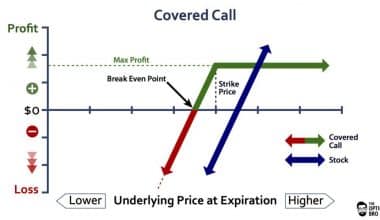Many employers find themselves forced to extend their company hours in order to accommodate client demand. Businesses that operate around the clock require employees who are willing to work evening or late shifts. However, finding employees during these undesirable hours might be difficult. Thus, employers have to derive a better approach in the form of compensation. To make it quite enticing, they made sure the benefits are far above your regular working hours. Paying employees a shift differential for a night or weekend of overtime is an effective way to deal with staffing challenges. Learn more about differential pay, who is eligible for it, and typical shift differentials in the sections that follow.
Shift Differential
Shift differential means extra pay for people who work outside of their regular work hours. Employers pay their workers more per hour to make up for the fact that the graveyard shift and weekend shifts may not be as desirable. There’ll always be times when you’ll work overtime, it’s only normal that you receive payment for such periods.
Shift Differential Calculator
Some workers earn a shift differential pay as extra compensation for working past typical business hours. Although shift differentials are not required by federal law, many companies, particularly those in the manufacturing industry, offer them to persuade employees to work “undesirable” shifts like the night or on the weekend.
Practically speaking, a shift difference is only one type of “differential pay.” Differential pay is the concept of paying employees more for completing extra work or tasks that other employees don’t want to do than they would ordinarily receive. Hazard pay is a different kind of differential compensation that you might be familiar with. It describes situations in which employees get paid more or even get a bonus for taking on riskier jobs.
What Elements Affect the Pay for Shift Differential?
In the United States, there are no laws or policies that govern the shift differential payment. As a result, it’s more of an internal corporate policy, which means every company decides its overtime payment terms. Most often, you can find this in the employee’s handbook, if it’s not there, your employer may bring it up during your recruitment training.
The process of determining differential rates of pay often entails subtracting the worker’s usual hourly wage and then adding an additional percentage to it. The “shift difference” is the additional percentage that is added to the standard rate.
Calculating shift Differentials
Employers often calculate the shift differential as a percentage of earnings. They simply decide what wages to pay. Consider the responsibilities, experience, hours, and whether the individual is paid hourly or on a salary when determining a percentage or amount for shift differentials.
Calculating the difference for a manual shift is rather easy. A shift differential for hourly employees may be compensated with an additional fixed rate per hour or a percentage of their base pay. Salary employees frequently receive shift differentials in the form of a percentage.
Shift Differential Example
Since there’s a bonus for overtime, let’s see how this works. For instance, a business might pay staff 10% more for working the graveyard shift, or a hospital might pay doctors $300 more to work the second shift. Although there’s no policy that governs differential pays, employers use it as a strategy for retention. Since it is not required by law, there is no set rate of compensation associated with shift differentials. Instead, a variety of business activities might be seen. As a result, the differential is often paid as a share of salaries. For instance, $22 is paid per hour when a base rate of $20 is multiplied by a 10% shift differential. If an employee later works overtime, the shifted disparity is used when calculating overtime.
Night Shift Differential Calculator
Employers encourage staff to work late hours if once it increases productivity. They also make sure they have a clear and consistent policy to deal with it. But then, what night shift differentials?
What is Night Shift Differential Calculator?
Night shift differential is the extra compensation that an employee gets for working nights. It sure has more benefits than most overtime compensation. However, most employees prefer weekends or weekdays overtime to night shifts.
Night differential, on the other hand, goes to employees who only seldom receive more money for working shifts between particular hours.
However, every employee will likely get a night differential pay of not less than 10% of his usual rate for each hour of work performed between 10 pm and 6 am.
Let’s imagine an employee earns $57.00 per hour and works from 10 p.m. to 6 a.m.
Shift Differential: Ordinary Day Night Shift
To determine the employee Night Differential pay:
Ordinary Day Night Differential = (Hourly rate × 10% × 8 hours)
$45.60 = ($57.00 × 0.10 × 8 hours)
Shift Differential: Day of Rest Night Shift
Rest Day Night Differential = (8 hours x 10% x 130% of hourly rate).
($57.00 x 1.3 x 0.10 x 8 hours) = $59.28
Shift Differential: Holiday Night Shift Special
Holiday Night Special Difference = (Hourly Rate x 130% x 10% x 8 hours)
($57.00 x 1.3 x 0.10 x 8 hours) = $59.28
Shift Differential: Special Holiday and Rest Day Night Shift at the Same Time
Special Holiday Rest Day Night Differential = (8 hours x 10% x 150% of hourly rate).
($57.00 x 1.5 x 0.10 x 8 hours) = $68.40
Shift Differential: Holiday Night Shift Schedule
Regular Holiday Night Differential: (Hourly rate multiplied by 200%, 10%, and eight hours)
($57.00 X 2.0 0.10 8 hours) = $91.20
Shift Differential: Regular Holiday and Rest Day Night Shift at the Same Time
Regular Holiday Rest day Night differential equals (Hourly rate 260% 10% 8 hours).
($57.00 2.6 0.10 8 hours) = $118.56
Shift Differential: Holiday Night Shift Twice
Double Holiday Night Differential = (8 hours x 10% x 330% of hourly rate)
($57.00 3.3 0.10 8 hours) = $150.48
Shift Differential: Double Holiday and at the Same Time Rest Day Night Shift
Double Holiday Rest day Night Differential = (Hourly rate × 390% × 10% × 8 hours)
$177.84 = ($57.00 × 3.9 × 0.10 × 8 hours)
Shift Differential and Overtime
The extra money given to employees who put in more than eight hours is referred to as “overtime pay.” The Philippine Labor Code only allows employees to receive 25% of their regular hourly rates during overtime unless a more generous company policy or collective bargaining agreement specifies greater OT pay rates.
Nonexempt employees who work more than 40 hours a week are entitled to overtime pay, which is paid at 1.5 times their regular rate, under the Fair Labor Standards Act (FLSA). If an employee works shifts that total no more than 40 for the whole workweek, you may pay them their shift differential. However, the FLSA does not require you to pay him or her overtime. If an employee works more than 40 hours a week outside of regular business hours, you are required to pay them overtime and shift differential.
Employers can use this document as a reference when a nonexempt worker receives shift differentials to figure out the standard rate for overtime purposes.
Step 1: Calculate Straight Time Pay
You calculate straight-line time by dividing the total number of extra time by the hourly base rate.
Straight time is the product of the total hours and the hourly rate.
Step 2: Calculate the Shift Premium Pay.
To calculate the shift premium rate, simply multiply the number of extra time/hours to determine shift premium compensation.
Therefore, Shift Premium = Hours Worked on Shift x Shift Differential Rate
Step 3: calculate the total compensation.
You calculate total compensation by adding straight time pay, shift premium pay, and any other compensation.
Total Compensation is the sum of Straight Time Pay, Shift Premium Pay, and Other Compensation.
Step 4: Establish the Standard Rate
You calculate the regular rate by dividing the total compensation by the number of extra hours all through the workweek.
Hourly Rate = Total Compensation x Total Hours
Step 5: Calculate the overtime pay
You need the new regular rate to determine the amount of shift differential or overtime pay. Most often, overtime pay rates are 1.5 times higher than the regular rate. Since the regular rate is already accounted for in the straight-time pay, we must multiply the employee’s normal rate by 0.5 times the quantity of overtime (OT) hours in order to get the additional overtime compensation.
Overtime Pay = OT Hours x RR x 0.5
Step 6: Calculate the total gross salary (Before Taxes)
To determine an employee’s gross pay, you’ll need the sum of total compensation, and overtime pay.
Total gross pay is the sum of all compensation and overtime pay (before taxes).
How do you calculate shift differential?
A worker’s regular hourly compensation plus an additional percentage of it the extra time is typically used to compute differential rates of pay.
How do you calculate a 5% shift differential?
Calculate the difference in compensation by multiplying the percentage by the hourly rate. For instance, if a worker makes $10 per hour and the night shift differential is 0.5%: The difference in pay would be $2 per hour (10 x 0.5).
What is the average shift differential pay?
Since there’s no general law or policy guiding shift pay, most business uses 10% of the role’s hourly income to determine shift differential pay. Employers who give differential pay to workers will extrapolate an assumed hourly wage that’s dependent on its annual compensation and apply the rate uniformly.
Is shift differential included in base pay?
Yes, it is. When computing an employee’s pay, the number of extra times is inclusive.
What is a Typical Shift Differential?
A typical night shift will likely start by 5:pm and end by 14. This is a typical night shift.
Is overtime paid on shift differential?
Yes, payments for overtime are an example of shift differential pay. Businesses compute the compensation using the regular hourly rate.
Conclusion
Differential shifts are beneficial to employers and employees. To the employee, it’s a great time to make extra stipends thereby increasing your earnings. Whereas the employer sees it as an opportunity to retain staff and increase his business productivity.
Shift Differential Calculator FAQs
How do you calculate a 10% shift differential?
Simply multiply the percentage by the hourly wage. For example, if a worker earns $50 an hour, and the compensation for the night shift is 10 percent: 50 x 0.10 = 5 This means, you’ll get an additional $5 for every extra hour.
At what time does shift differential start?
It depends on the nature of the job in question. For instance, medical teams may joggle between the morning, afternoon, or night shifts. Whereas other businesses will start by 5p.m
- Work Schedule: Steps to Schedule Employees Effectively
- MARKUP CALCULATOR: How to Calculate Markup Price and Formula
- BREAK EVEN CALCULATOR for Social Security and Mortgage (+ Best Options)






